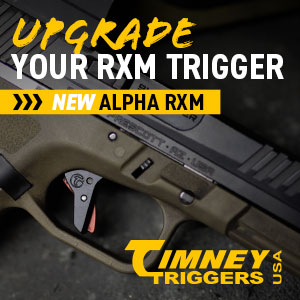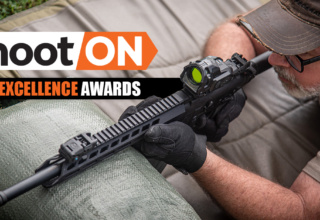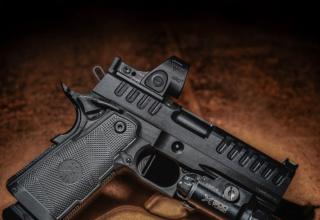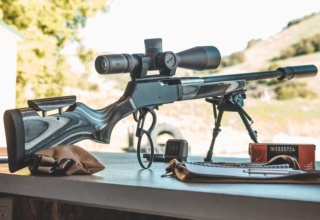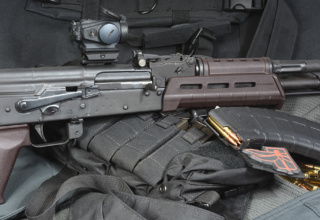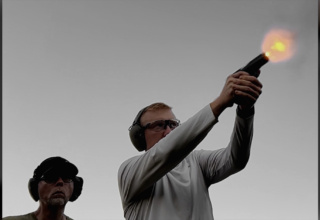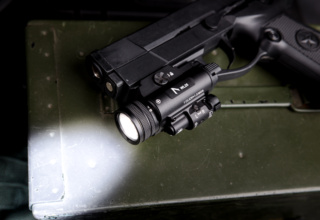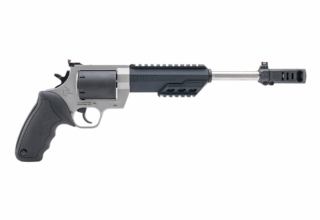Experienced shooters will tell you that, while there are many contributors to accuracy, and these factors have a cumulative effect on accuracy, it is often the trigger that makes the biggest difference. The trigger is the “in motion” interface between the shooter and the firearm. Its mechanics must work in concert with the shooter’s unique form if there is any hope of obtaining accuracy (defined as consistent point-of-impact).
The most basic function of a trigger can be summarized by a single action: releasing the hammer to strike the firing pin. The problem is, there are many aspects involved in making that action take place, and each one can have a positive or negative affect on accuracy. Thus, you rarely see a serious shooter, competitive or otherwise, who has not addressed the trigger in his or her firearm.
The AR-15 utilizes a trigger system that gets the job done admirable, but as a combat platform originally designed to function in high-stress conditions and austere environments, precision and finesse are not among its trigger system’s virtues. The fact that the hammer and sear relationship is dependent upon the hammer and trigger pin locations within the receiver (an overall a “loose-ish” arrangement) means there is some wiggle room that must be accounted for. In other words, ample hammer hook and sear overlap for safety purposes. This translates to longer “creep,” or the time between the moment the trigger sear begins moving along the hammer hook and the time the sear releases the hammer. The longer and crunkier the creep, the greater the chance the shooter will disturb the shot and accuracy will be impacted.
This is just one factor within the trigger system that can contribute to an AR’s poor showing downrange.
The easy answer to solving an off-the-shelf AR’s trigger woes is to ditch the MILSPEC version (assuming that’s what came in your rifle) and replace it with a precision aftermarket trigger system. There are many on the market today that replace the OE trigger part-for-part, but with special attention paid to the springs, material construction, hammer/sear engagement profiles and so forth. While the top-tier models work great, they come with a proud price tag and, unfortunately, utilize the same pin arrangement as the OE trigger assembly. This can induce variables in the trigger’s performance depending on the quality of the receiver construction. Are the trigger and hammer pin holes exactly where the aftermarket trigger manufacturer designed the trigger for them to be? Is one or the other receiver pin holes a tad too large? What about pin diameter consistency? In short, an “off” receiver or pins can make even the best aftermarket trigger system not live up to its designed performance expectations.
This is why an increasing number of dedicated AR shooters—particularly those in the competition realm—are turning to drop-in trigger assemblies.

Drop-in AR trigger systems are self-contained units in that the trigger, disconnector, and hammer are all assembled within a cassette-style housing. The cassette is then secured in the receiver with conventional hammer and trigger pins. This approach eliminates the performance inconsistencies that can arise with conventional trigger systems because the drop-in trigger’s performance is independent of the pin locations or receiver build quality. A drop-in trigger will feel and perform exactly as engineered by the manufacturer.
That’s the kind of consistency that leads to improved accuracy.
One of the newest drop-in trigger assemblies to hit the market is the MPC (Marksman Performance Choice) system by Velocity Triggers. I’ve used Velocity’s Classic AR trigger in my souped-up AR for the last three years and have nothing but praise for its precision performance and endurance.
As a company, Velocity Triggers comes with exemplary credentials. Owned and operated by Tom Vehr, who oversaw design and production for Timney Triggers and Knight Rifles over the course of 27 years, Tom applied his broad experience to develop a drop-in trigger platform that could stand toe-to-toe with the best systems on the market but do so at a substantially lower price. That’s what first turned me on to Velocity Triggers, and I’ve never been disappointed since.
Attention to details, along with diligent manufacturing control, have given Velocity drop-in triggers an envied reputation in the AR field. The trigger, hammer, and disconnector, for example, are cut via EDM wire technology rather than conventional CNC machining for maximum dimensional precision. The trigger is then treated with DLC (diamond-like carbon coating) and the hammer and disconnect treated by Robar with an NP3 finish to deliver a high lubricity, low-friction coefficient that contributes to the trigger’s durability and smooth operation. Tuned to an exact 3- or 4-lb pull weight (your choice), this single-stage trigger presents crisp sear breaks with practically imperceptible creep. Shooters adept at burning through courses of fire will appreciate the trigger’s blessedly short reset that registers both audibly and tactilely. Containing the trigger assembly is a 6061 T6 machined aluminum housing that is secured solidly against the trigger and hammer pins and the receiver by two tension and two set screws.

The new MPC trigger system represents a slight departure from the Classic model in that the MPC trigger offers an interchangeable trigger shoe. There are three trigger shoes in the MPC lineup—curved, straight, and straight with a finger stop. Each trigger is 3/8-inch wide (versus the conventional 1/4-inch) and can be ordered with one of two surface profiles: smooth with a radiused face or serrated with a flat face. Additionally, six colors are offered: red, black, blue, or pink anodized and Flat Dark Earth or OD Green Cerakote.
The idea behind the MPC trigger is to address the fact that no two shooters’ preferences or styles are the same, and even with an individual shooter, one trigger style may be better suited for a particular application than another. The MPC system lets the shooter choose the ideal trigger profile for target, 3-gun, or CQB, and quickly change the trigger shoe as needed.
From an ergonomic perspective, I found the broader trigger shoe face to be conducive to a straight pull. With a conventional trigger, the narrower trigger face requires a conscious effort (or good training) to keep your finger pad parallel with the face during the trigger pull. The MCC’s wider trigger shoe face seems to minimize those “off-angle” pulls and promote better trigger discipline.
The MPC trigger secures to the MPC trigger assembly via a socket-head cap screw located at the bottom of the trigger. When used with a conventional trigger guard, changing the shoe means dropping the trigger guard out of the way. To eliminate this inconvenience and to speed up the shoe-swap process, Velocity Triggers has come out with a companion trigger guard. The Sentinel Trigger Guard is machined from billet 6061 T6 aluminum and is available with either a slot or three holes in the bottom. This allows you to use an Allen wrench to change out the trigger shoe without having to drop the trigger guard. Color coordinate with your trigger and you have a nice-looking set up.
So, how easy is it to install an MPC trigger assembly and trigger guard? Check it out on my Rock River RRage…


















